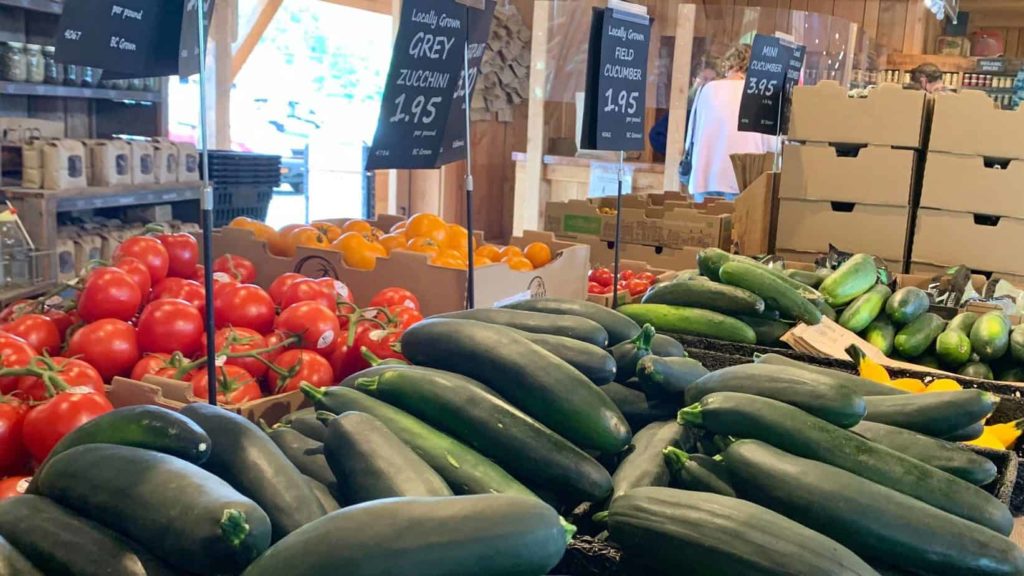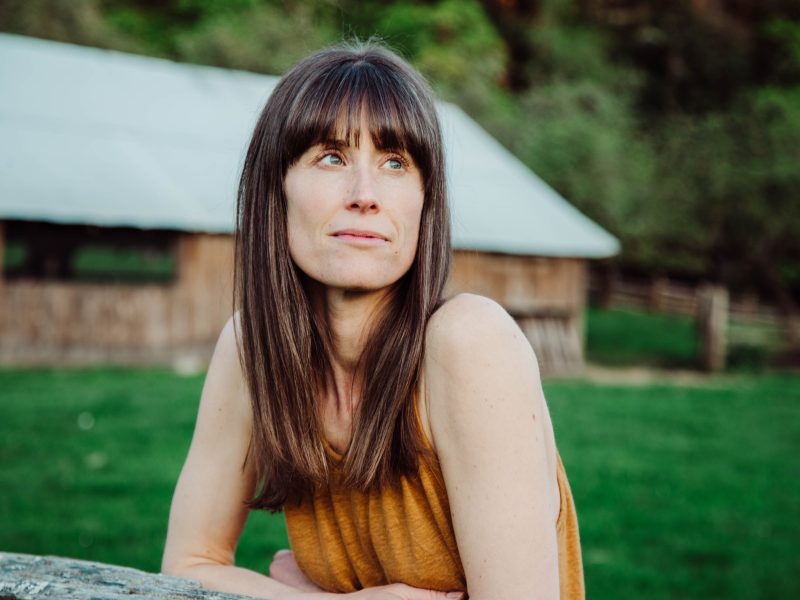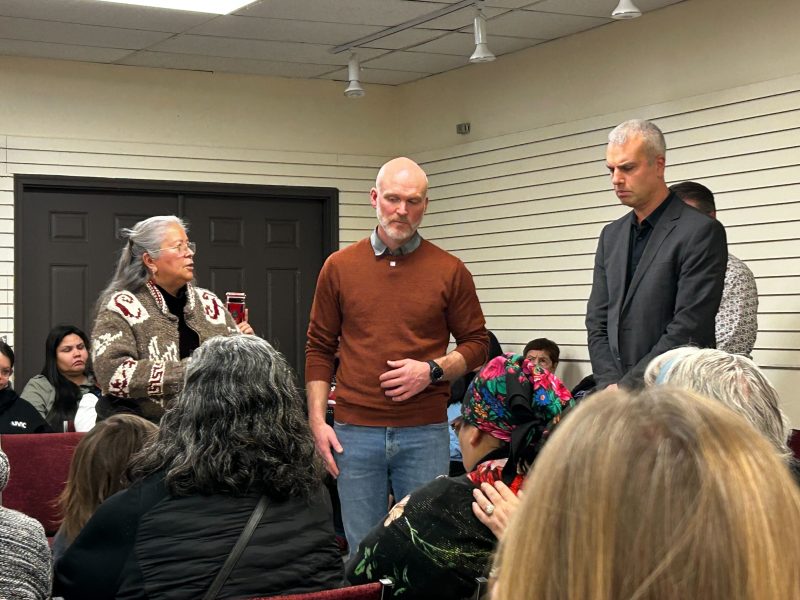
How do you make sure everyone has enough to eat during a prolonged emergency? It’s a question that community groups on Vancouver Island have had to figure out, and fast, over the last five months.
The COVID-19 pandemic has seen empty shelves at grocery stores, an increasing cost of food and the disruption of meal programs.
Community groups in the Cowichan Valley say the pandemic has exposed the depth of food security issues in the region. They say, too, that this time has brought new innovation, collaboration and solutions.
“I’ve been doing this work for 13 years. But in a way, we’ve been preparing for this day in a weird apocalyptic [sense],” said Judy Stafford, executive director of the Cowichan Green Community Society. “This is why we’ve been here all along.”
Called to action
The Cowichan Green Community Society is a non-profit organization focused on environmental sustainability and food security in the Cowichan region. About one month into the pandemic, Stafford said they were approached by the City of Duncan to assemble an Emergency Food Access Task Force. The task force is composed of 25 organizations working to ensure everyone in the community has access to nutritious, culturally appropriate food during the COVID-19 pandemic.
Stafford said people in the region access food in different ways such as through school meal programs, food banks, meal delivery programs and more. But as the pandemic began to take hold, many of those programs shut down either temporarily or indefinitely, or had to find ways to work through the pandemic.
Related: Inside the Goldstream Food Bank, where staff and clients are bracing for the end of pandemic financial supports.
The Emergency Food Access Task Force has been meeting once a week to figure out how to get food to different community members, how to recover food from grocery stores and deliver it to those in need and how to get money and grants for community food organizations that could use some monetary help, Stafford said. When the Warmland House shelter had to significantly reduce numbers due to physical distancing restrictions, the task force delivered hot meals to those who were on the street and now continues to help with meals at temporary shelters.

“People really pulled together quickly in a short period of time and made sure food was available,” Stafford said. “But the lack of food and money is not going away any time soon.”
The number of individuals being supported by the Cowichan Green Community in just one of its programs jumped from 30 to 180 during the pandemic and Stafford said most of the funding that has been raised has been used already.
Peeling back the curtain
At Nourish Cowichan Society, an organization that delivers meals to children in schools in the Cowichan Valley School District, the need for meals and hampers grew during the pandemic. Executive director Fatima da Silva said once schools closed, the organization worked with the school district to deliver hampers with enough food for four people to homes. Da Silva said they ended up delivering around 460 hampers per week during the beginning of the pandemic, spending about $12,000 to $13,000 on food weekly. In comparison, the organization typically spent about $3,000 per week on its in-school program.
“We had to open four other kitchens because the numbers were so big,” da Silva said.
Community members assembled as soon as they could, da Silva said, donating money and food to the organization so its work could continue to meet the needs of the community.
Now that people have gone back to work, she said they deliver around 300 food hampers per week filled with non-perishable items as well as prepared meals. As for when school starts again, she said she’s taking things day-by-day but knows that things can’t go back to normal after seeing just how many people are affected by food insecurity.
“We actually knew there was a huge need but it was almost like looking through this opaque curtain where you see things happening on the other side and you don’t think you can handle it so you don’t really open that curtain,” da Silva said. “COVID-19 lifted all those barriers, all those curtains … and now you’re exposed to a level of need that is way bigger and everything we thought we couldn’t tackle. We have managed to find solutions, we just didn’t know that we could.”
Food insecurity by the numbers
About 14 per cent of Canadians said they struggled to afford food or went hungry in May, according to Statistics Canada. Canadians living in households with children were more likely to be food insecure. In Cowichan, one-in-four children live in poverty, according to First Call: BC Child and Youth Advocacy Coalition.
The Cowichan Green Community says that food security is achieved when “all members of the community have access to enough nutritious, safe, ecologically sustainable and culturally appropriate food at all times.”
According to a 2017 University of Victoria report, in 2011 and 2012, 11,571 people who were 12 years of age or older in Central Vancouver Island were moderately food insecure, with 7,399 people in the same age group severely food insecure. Of those aged 20 to 34, 4,659 people were moderately and severely food insecure and 1,426 people aged 65 and older were moderately and severely food insecure.
The aging population and an increased cost of living, including rising food costs, contribute to food insecurity in the region, the report says. It also calls for more collaboration between food organizations in the region to better serve the population and pool resources.
Growing food, and growing awareness
The pandemic has brought new collaboration between groups, Stafford said. And, it’s brought more awareness to the issue in the broader community.
“People realized our food systems are precarious,” Stafford said. “People are interested in buying and growing local – seed sales escalated this year.”

Some community members have learned to become more self-reliant by cultivating their own food. Social Planning Cowichan’s project director facilitator Rosalie Sawrie said that based on a COVID-19 survey, 40 percent of households are growing more food than they used to.
While COVID-19 has presented many different challenges, Stafford said she thinks new realizations about food security in the region have been made – something that may not have happened outside of a pandemic.
She said she hopes the pandemic will prompt provincial and federal governments to make food a priority and set up a policy for food security.
“Food, like housing, is a right — it’s part of life,” Stafford said.
Da Silva said that while the future seems uncertain, she hopes grassroots movements will be the ones to come up with solutions to food security issues and take those solutions to governments. She said fighting food insecurity is a community effort that begins with having conversations and shedding light on the issue.
“The conversation needs to be in the open. Let’s not make this taboo anymore,” da Silva said. “Communities need to start talking about the issue openly.” [end]
Editor’s note: Aug. 24, 2020: A previous version of this story said the number of people supported by Cowichan Green Community jumped from 30 to 180 when in fact, that number was just for one of the organization’s programs. The story has been updated to reflect this.



